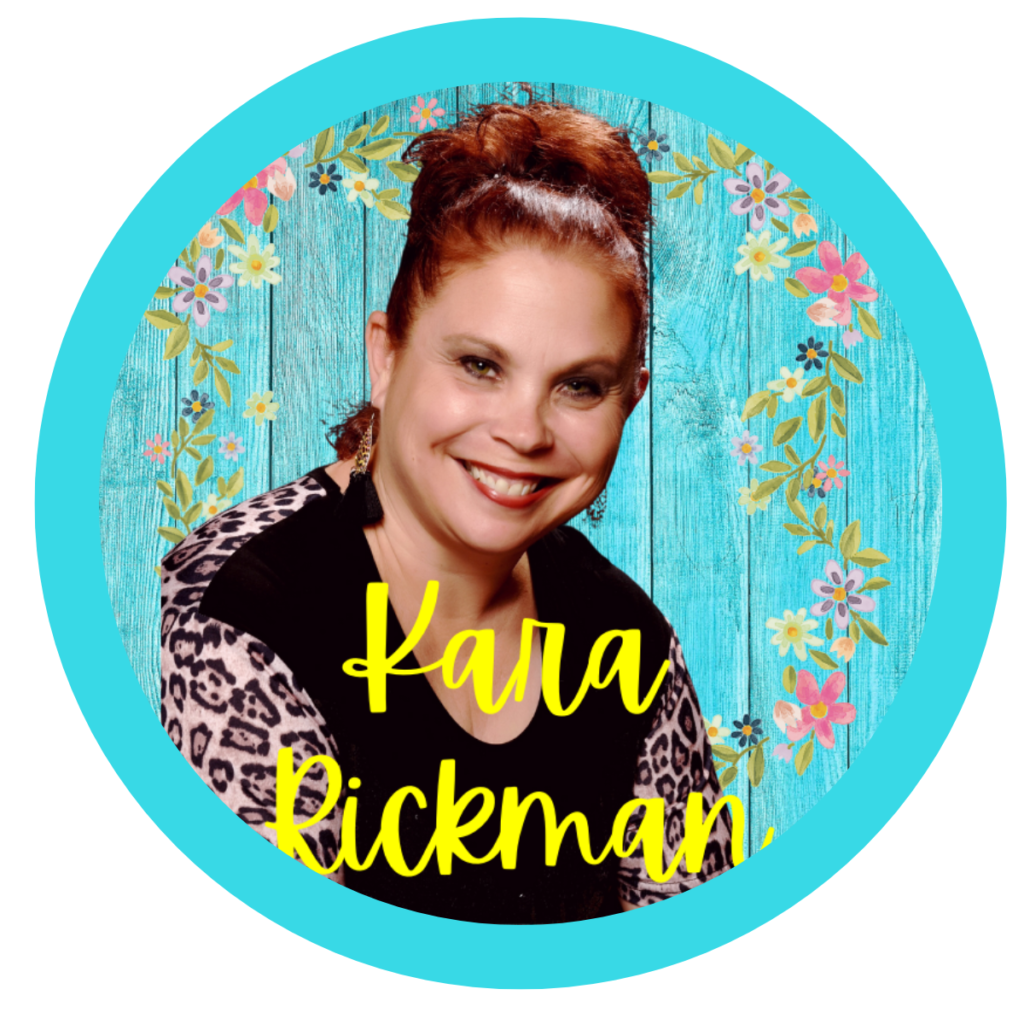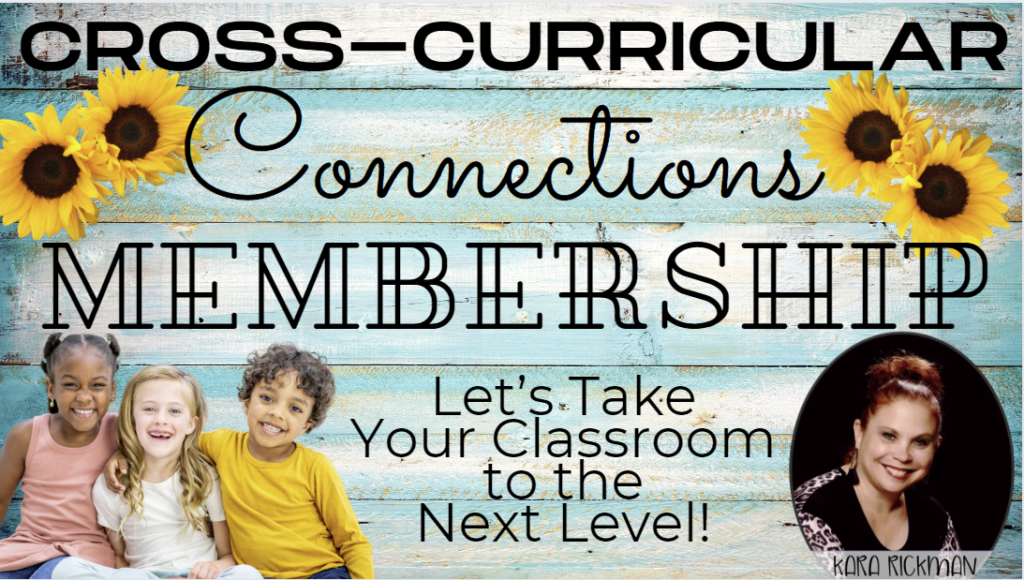Let’s learn about my 4 F’s: 4 Fun Friday Activities that I do with my First Graders!
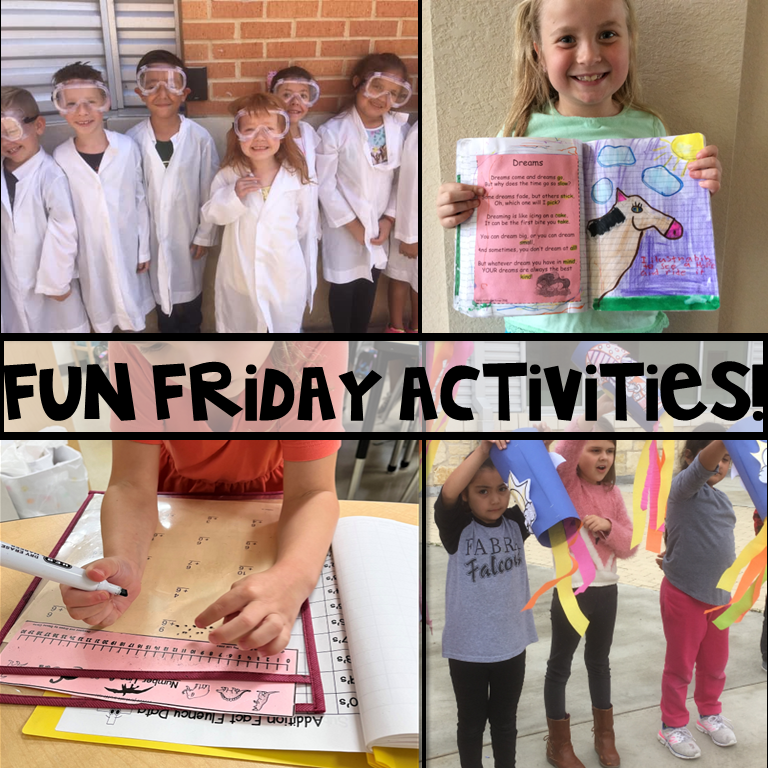
Did you know you can have 4 Fun Friday Activities with your students and still have purposeful lessons? Fun Friday doesn’t have to be daunting. It can be something that you can do consistently each Friday, and it’s something that your students can look forward to!
I know that some principals might not allow you to have Fun Friday if your Fun Friday consists of extra recess, play-do, games, and such, so here’s my Fun Friday schedule that is purposeful, and all of these activities follow your standards for sure!
My 4 Fun Friday Activities that I like to do with my students are:
1.) What Are We Looking FORWARD To- where my students tell what they are looking forward to during Morning Meeting.
2.) FOCUS POETRY– Have a poem a week that we can sing or read, and have your students visualize their poem in their poetry notebook.
3.) FACT FLUENCY– where my students practice their fact fluency for addition/subtraction using their data folder.
4.) FAHRENHEIT FRIDAY– where my students take part in an experiment/investigation about the science topic that we are covering during the week.
1.) Fun Friday: What Are We LOOKING FORWARD to?

The first thing I like to do for FUN FRIDAY Activities is during Morning Meeting we always tell “What Are We Looking Forward To?”. I use a slideshow, and this is what it looks like:
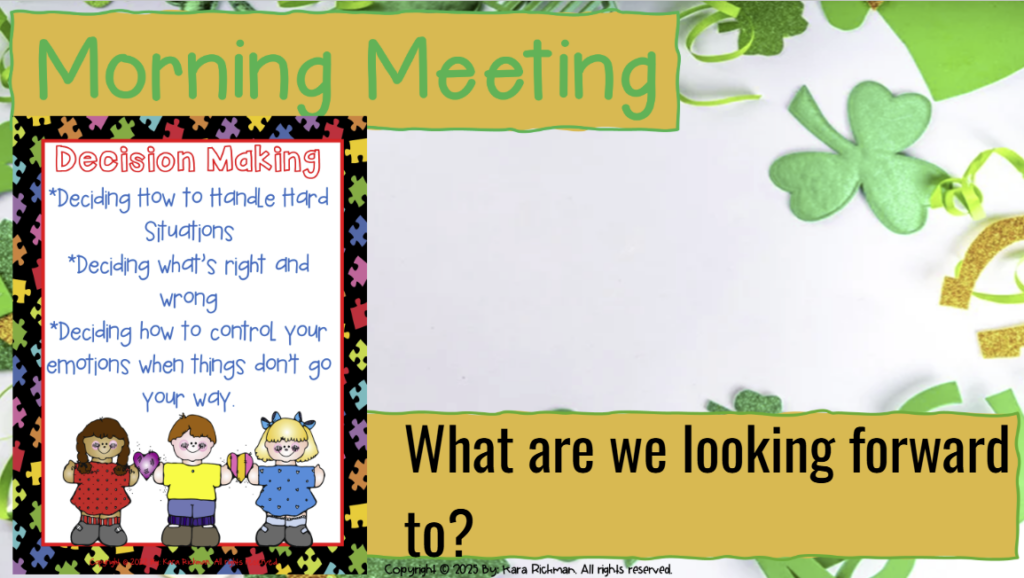
I have the Great 8 Skill card on the slideshow and the question at the bottom. I also have a sand timer that I pass around, and my students have one minute to tell me what they are looking forward to. Some of the things they say are: I’m looking forward to… the new star student, treasure box, and Fahrenheit Friday. They can also talk about something they are looking forward to over the weekend and something fun they are going to do.
They talk about a special birthday party they are attending, spending time with their family, or just catching up on their sleep! By them telling about this also gives me an inside look at what they will be doing on the weekend, and then I can follow up on Monday and ask them how their weekend was!
If you’re interested in my Great 8 Skills Resource, click HERE.
2.) Fun Friday: Focus Poetry
I have a poetry center in my classroom with my Focus Poem up on the bulletin board. My students sit on the floor in front of the poetry center to read the poem. This is a shared reading, where we are sharing the pointer to read. On each side of the bulletin board, I made index cards with parts of speech words or punctuation words such as capitals, periods, question marks, elipses, etc. I stapled them together to make a ladder.
On the other side of the poem is my Parts of Speech Ladder with cards such as: rhyming words, nouns, verbs, adjectives, etc.. I use these cards to spiral skills with each poem. By now, my students are familiar enough with all of the cards that they can turn and tell their partner how many periods, capitals, nouns, verbs, or adjectives in the poem.
I change my poem every week. So, whatever my theme is for science or social studies, my poem correlates. For example, if my theme is Oceans, then my poem will be about Whales. If my theme is about Texas, then my poem will be about Cowboys or Texas. If my theme is Martin Luther King, then my poem is about dreams. This is an easy way to teach cross-curricular for sure! Here is a picture of my poetry center with my focus poem.
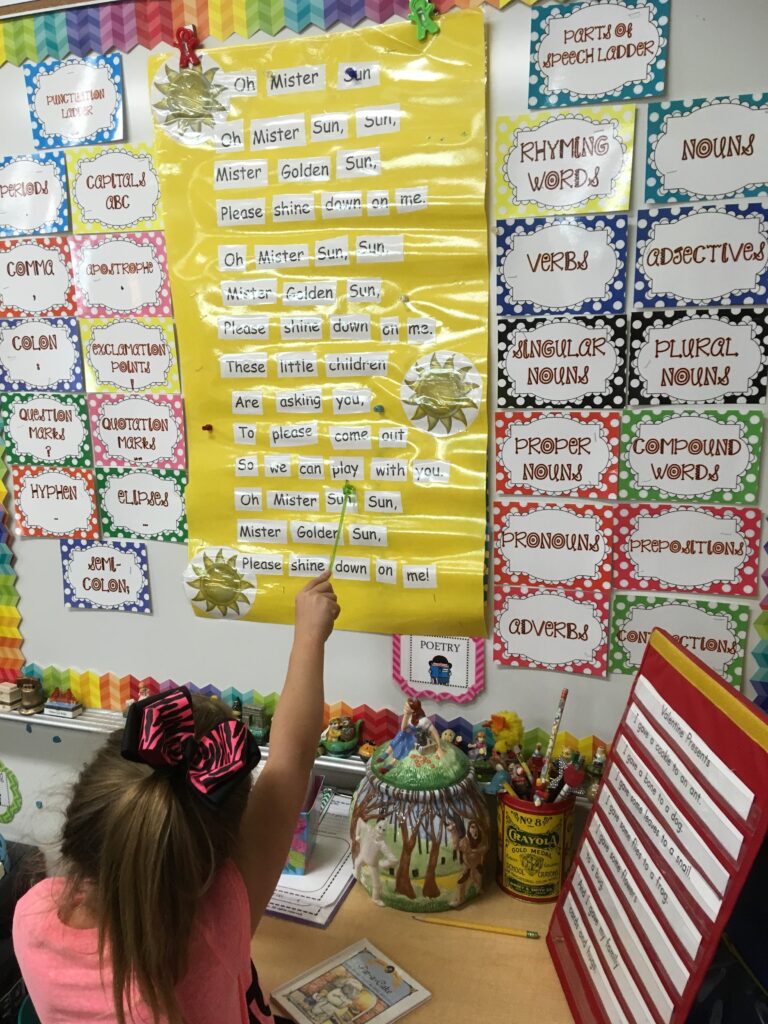
My students and I read the poem about 4 times to practice the fluency, rhyming, and rhythm of the poem. If it’s a song, then we SING! We do this for about 5 minutes. I give them the challenge to find a certain word in the story to highlight. It may be verbs, contractions, rhyming words, or whatever skill of the week I want to focus on. Hence the name Focus Poetry!
We reviewed whatever skill I’ve already taught, we reviewed with our poem. Each week, we highlight something different: nouns, verbs, adjectives, prepositions, adverbs, etc… But I make sure that I’ve already taught it during my grammar lessons in Writer’s Workshop.
Lastly, I tell my students to close their eyes and visualize the poem in their head. I tell them that poems also have a message and purpose that the author wants to send- entertain, describe, explain, persuade, or inform. So, we talk about the message and what it means to us. Then, I have my students share out loud what they will illustrate, or turn and tell each other. This will help those low babies get some ideas of what to illustrate.
Now, on to the fun part!
Meanwhile, hand out a copy of the poem on colored construction paper, and the students cut it out. They take out their red poetry journal and glue their poem on the left-hand side. On the right-hand side, they illustrate a beautiful picture that they created a mental image for in their mind. At the bottom of their illustration, they write a caption… “I drew…. or I illustrated,” depending on the time of year. In their poem, they illustrate a border with a marker. Here are some examples from my Focus Poetry notebook:
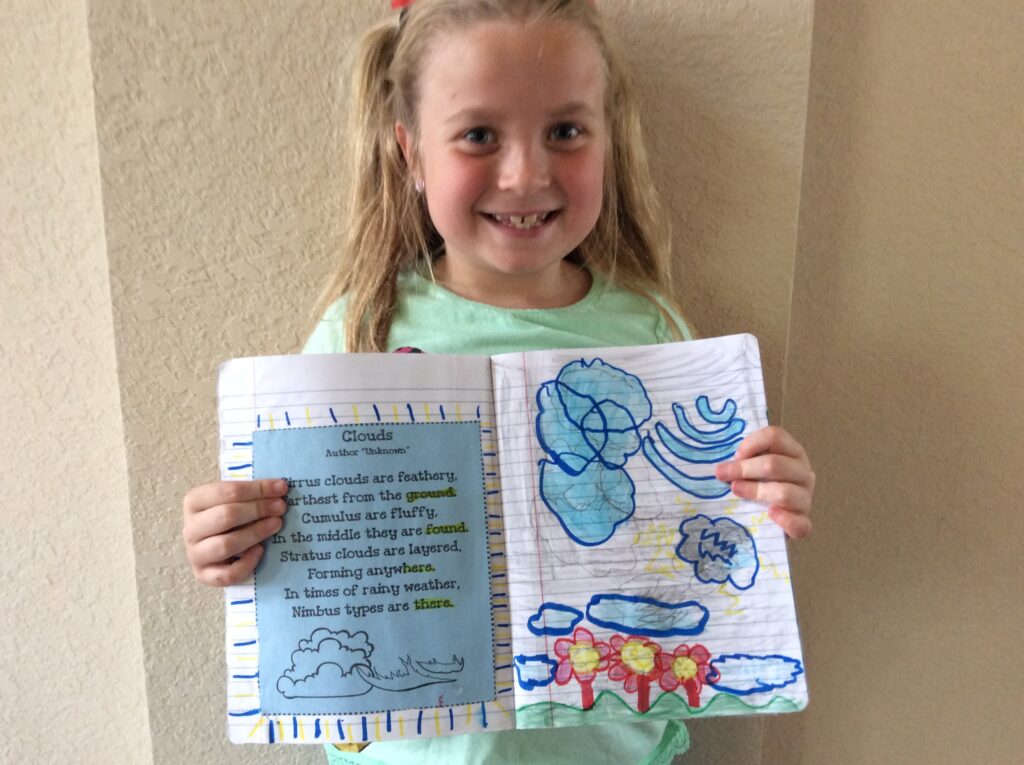
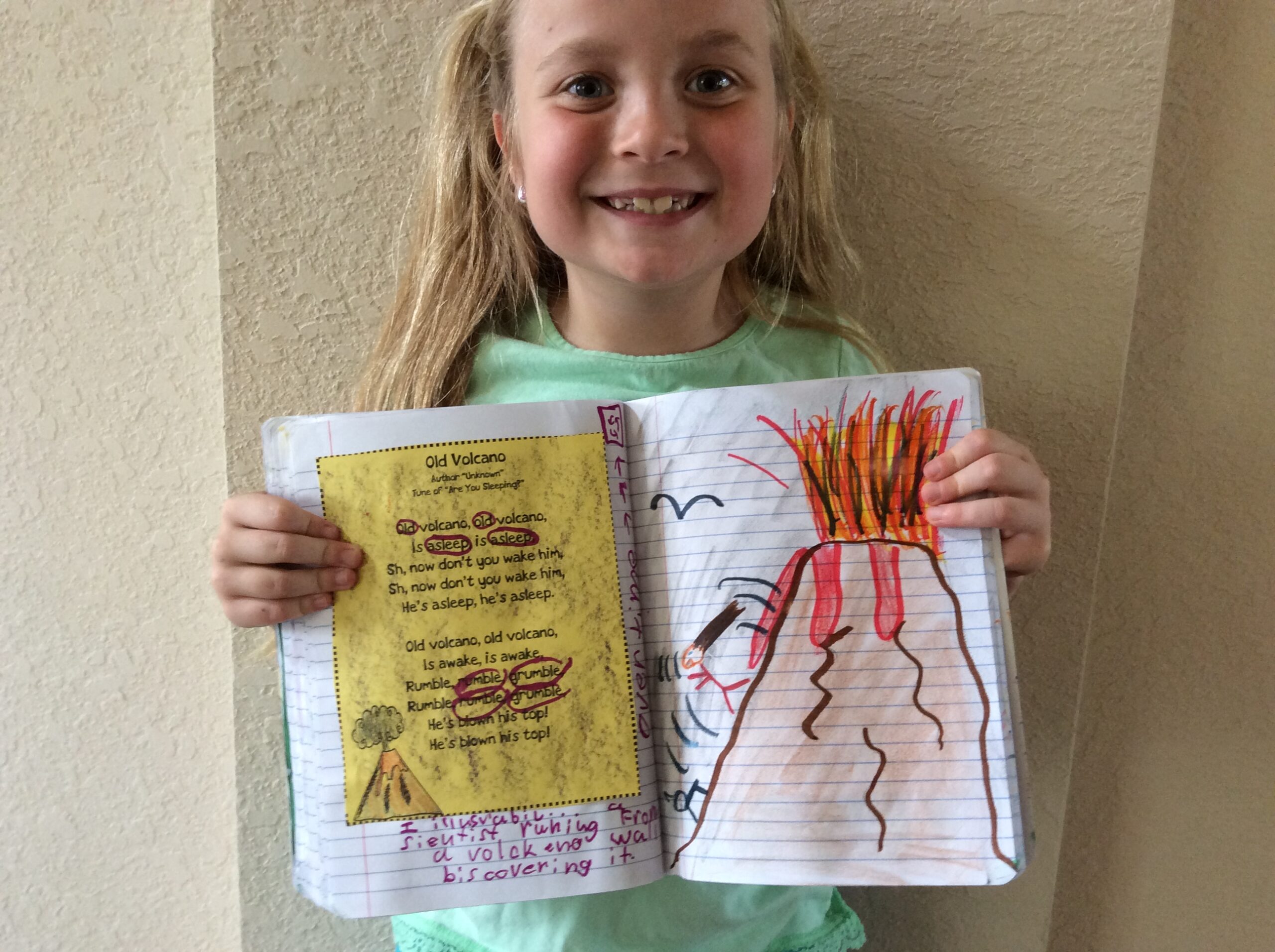
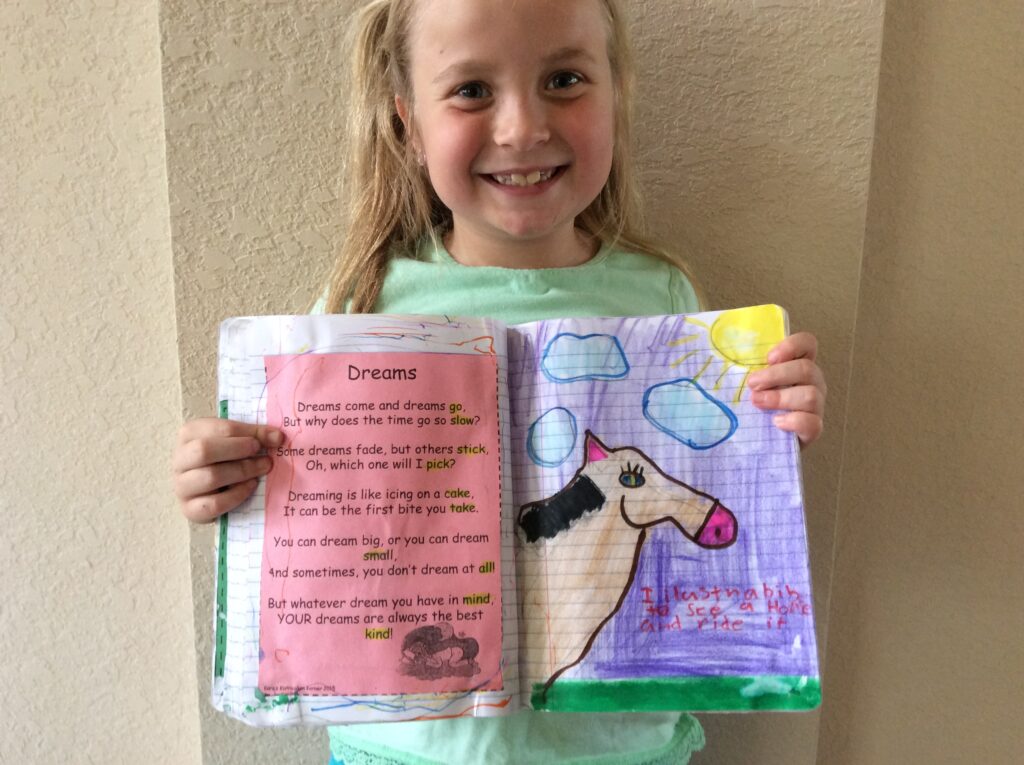
If you’re interested in reading more about how I teach my Focus Poetry, click HERE. Or, if you’re interested in checking out my Focus Poetry BUNDLE for the whole year, click HERE.
3.) Fun Friday: Fact Fluency
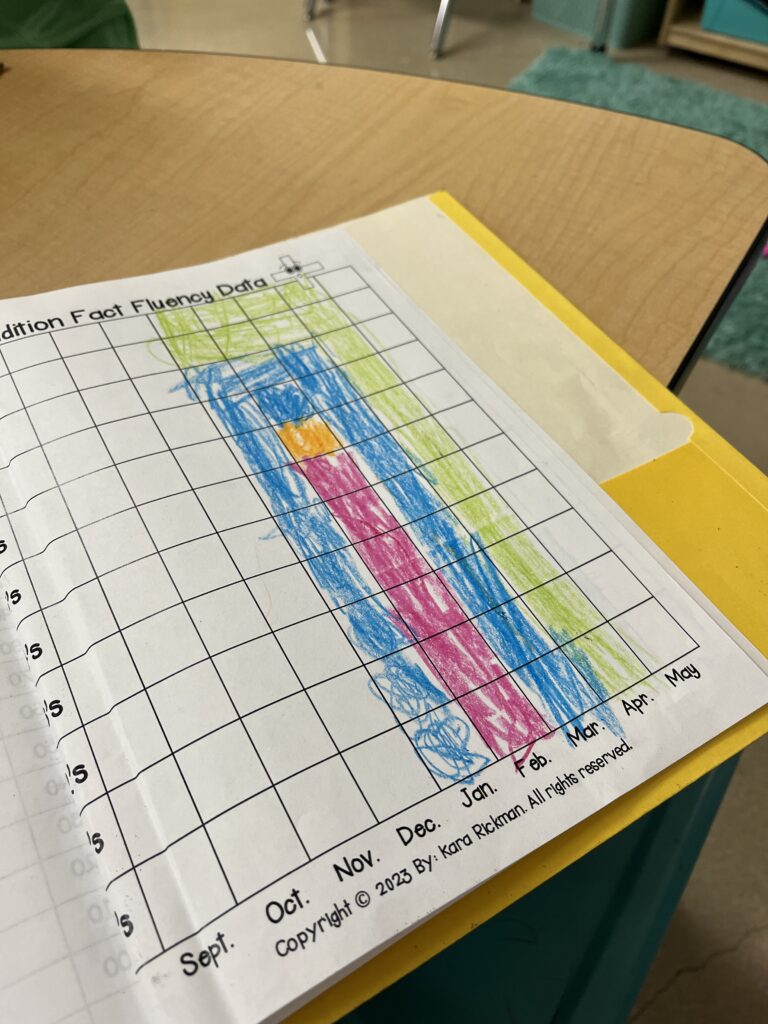
Every Friday, my students practice their Fact Fluency addition and subtraction to move up their chart in their data folder. I have addition and subtraction math mats from 0-10, and during Math Workshop, my students bring me their data folders, and we work on the current math facts that they left off from last time.
If they get all of the facts correct, then they get to color in the next square in their data folder. Their goal is to finish all the addition and subtraction math facts from 0 to 10 by the end of the school year. If they miss any answers, I have them fix them before they color in their next square. I do not time them, this is simply working at their own pace. It’s a lot less stressful that way.
I love doing this fact fluency because you can easily differentiate this activity depending on what level the students are on. Each student is on their level, so some may be on addition 3’s while others are on subtraction 7’s. They work at their own pace, and they LOVE moving up to the next one!
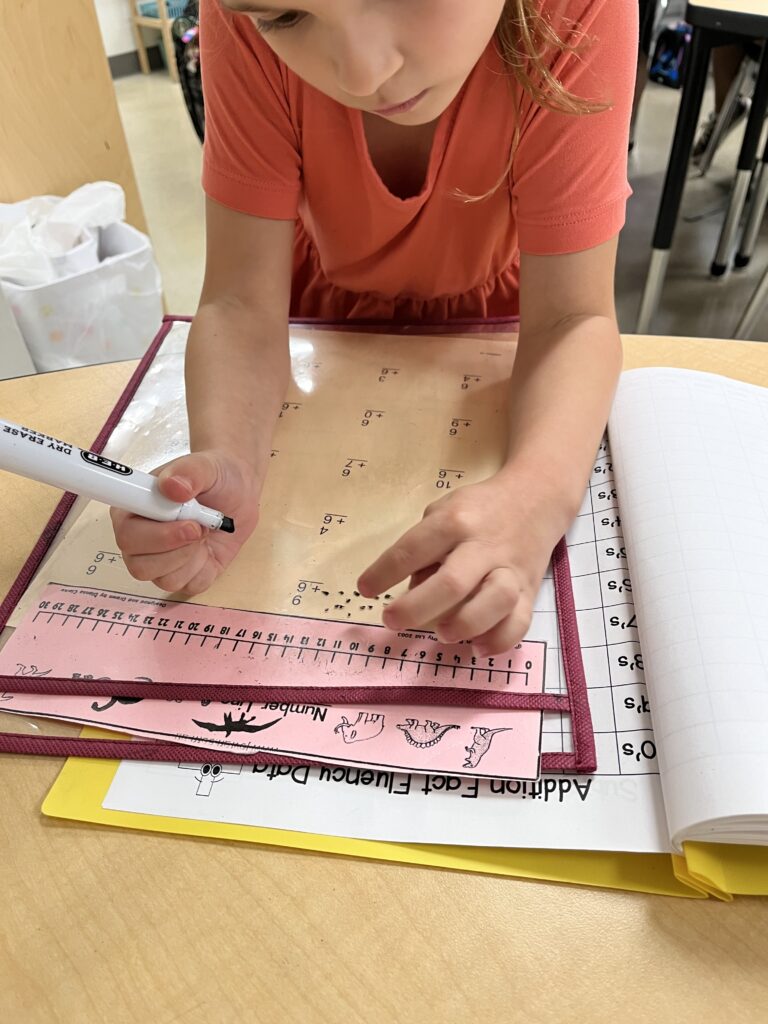
If you’re interested in my student data tracking templates, which include addition and subtraction, click HERE.
4.) Fun Friday: Fahrenheit Friday
On Fahrenheit Friday, we sit on the carpet and listen to a story. We make an anchor chart of our learning. We review what the scientific method is and then talk about what we are going to investigate or experiment that day. We talk about what scientists do: investigate, observe, ask questions, think, experiment, discover, collect data, sort data, take guesses, and test their data.

There are a lot of great discussion questions that you can ask your students during science, and I use this to engage the students into being excited about what they are going to investigate. I had a parent make my lab coats one year, and it has been one of the best things that I use in my classroom. The students really feel like scientists and are so excited to wear them. The table captains get to wear the lab coats and conduct the experiment, but only after I explain how to do it.
After the experiment is finished, my students always have an interactive notebook that they complete and glue into their science journal.
Here are some fun Fahrenheit Friday Science Investigations/Experiments that we’ve done that my students LOVE!
Shadow Experiment- I read All About Shadows, and then my students go outside and draw their shadows on the sidewalk and then illustrate their shadows on their shadow template.

Blooming Flower- We read What is a Scientist, and then I cut out a flower and fold up the petals and then we watch the flower unfold in the water! If you’re interested in checking out my Blooming Flower Experiment, click HERE.
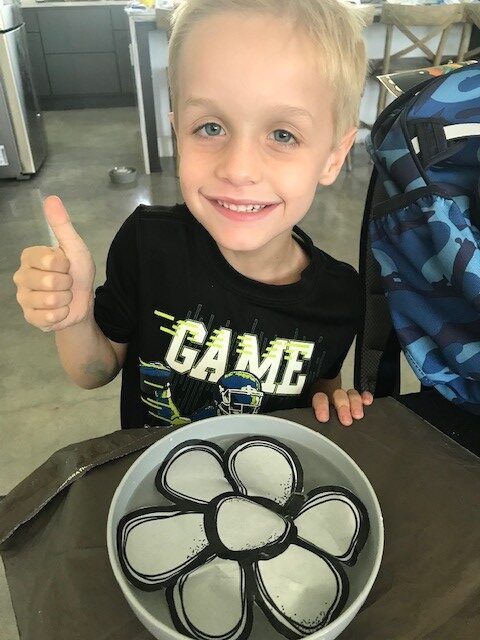

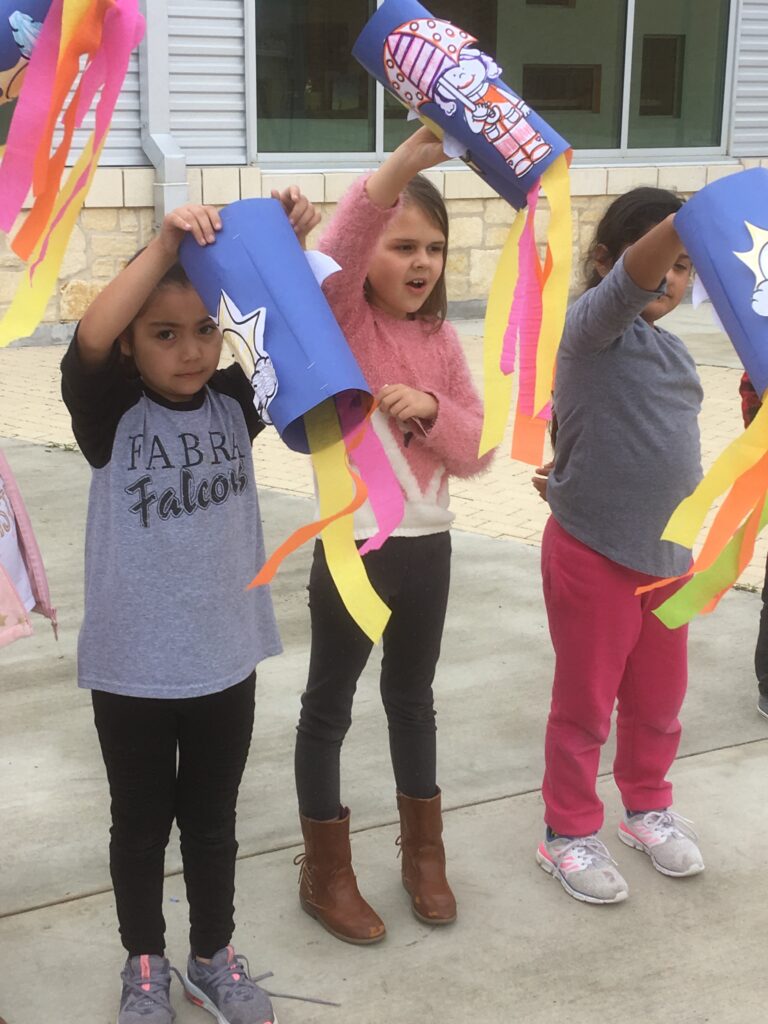
If you’re interested in checking out my Fahrenheit Friday Science Experiment BUNDLE, click HERE.
So, there you have it! Thank you for reading all about my Fun Friday Activities!!! I hope you learned something that you can implement in your classroom!
Until next time, let’s take your classroom to the next level!
